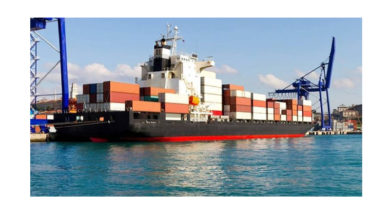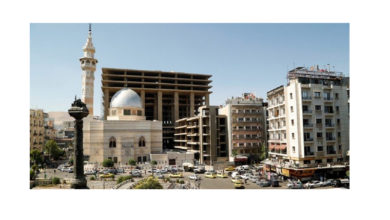The Next Big Wave?
Digital printing is spreading like a benign virus throughout the world of printing industry and packaging is not immune. According to Smithers Pira, Digital print for packaging and label continues to expand rapidly, driven by run length reduction, last stage customisation, versioning and personalisation, environmental factors and more. Smithers Pira forecasts that digital print for packaging will more than double from $6.6 billion in 2013 to $14.4 billion in 2018.
Share a Coke Campaign
The strength of any digital technology is the speed with which you can produce the first job and the consistency of the output. These benefits are applicable to many types of package producers today and as the technology develops it will continue to expand.
 The potential of digital print is broadening, and packaging companies are only just beginning to realise the benefits on offer in terms of personalisation, customer engagement and integration with online campaigns.
The potential of digital print is broadening, and packaging companies are only just beginning to realise the benefits on offer in terms of personalisation, customer engagement and integration with online campaigns.
One of the best application of digital printing for packaging has been highlighted by Share a Coke campaign. Digital print can be a successful method of driving traffic and creating a buzz around a brand, as proven by Coca Cola’s global “Share a Coke With . . .” campaign this summer. Designed to allow customers to ‘share a coke’ with friends, family and loved ones, the initiative featured a number of the world’s most popular names digitally printed onto 375ml and 500ml bottles of Coca Cola.
“Share a Coke” took advantage of the variable data capability of digital presses, and used versioning and personalisation to roll out the campaign in many countries around the world including Middle East. In the Middle East the popular names are printed on the Pepsi bottles as well as cans. It is a great incentive for many people to choose coke instead of any other beverages, simply because they see their name printed on the can or bottle. You can also create your own virtual coke bottle and label by entering shareacoke.com website.
Internet and digital print – match made in heaven
Digital printing when is used in tandem with Internet capabilities can produce what we call smart packaging. Smart packaging usually takes advantage of smart labels which make it possible to tract the product and the inventory. QR codes is also another technology that is the result of advancement in digital printing. It was first designed for the automotive industry in Japan but now has extensive usage in packaging. The QR Code system became popular outside the automotive industry due to its fast readability and greater storage capacity compared to standard UPC barcodes. Applications include product tracking, item identification, time tracking, document management, and general marketing.
Many pundits believe that the short term packaging innovation will be focused primarily on labelling for security and prevention of fraud.
Smart labelling on the other hand reduces the human-error factor by providing a visual indication of freshness, which crosses language and cultural barriers.
This type of innovation could also have a major impact in healthcare, particularly in the developing world, with the distribution of medicines and vaccines where lack of clarity about freshness or temperature changes in transportation can often lead to waste.
Digital set to take more market share
It is not difficult to see why digital print for packaging is bound to capture more market share. Digital printing for packaging is well suited to take on challenges of the consumers’ growing demand for intelligent packaging and new substrates. Digital print for packaging is still constitutes a very low percentage of overall packaging market but it is growing at double digit rate. The reasons are obvious. Run sizes are getting smaller, especially for markets that require frequently updated labels.
 New narrow web presses offer shorter short changeover times and reduced material waste which makes it economical for printers to print short run jobs. Traditional package printing methods like flexo, gravure, and offset sometimes take weeks to prepare the plates or rolls and get the printer run-ready. This is not the case for digital printing.
New narrow web presses offer shorter short changeover times and reduced material waste which makes it economical for printers to print short run jobs. Traditional package printing methods like flexo, gravure, and offset sometimes take weeks to prepare the plates or rolls and get the printer run-ready. This is not the case for digital printing.
Digital printing offers cost saving to printers. One major reason for this is the considerable reduction in waste and also storage. Digital printing also is faster and offers versioning. Foreign language requirements on packaging continue to evolve and become more specific. Digital is a go-to solution for national brands expanding into international markets, because even dominant players sometimes have to start with small volumes. Plus, they want to appear committed to the market with well-designed and well-produced multilingual packages. For those companies, asset management software is also a must. Other benefits includes advertising initiatives (Coke campaign), variability of SKUs and other benefits.
Available technology
The advent in inkjet technology has contributed to a great extend to digital print for packaging. There are also cooperation between offset and digital printing equipment manufacturers, which revolves around packaging.
HP and KBA recently announced plans to develop a high speed, high volume, 110-inch -wide (2.8 meter) simplex inkjet web press for pre-printing of corrugated top liner. This solution will be called the HP T1100 Simplex Color Inkjet Web Press and will enable corrugators to combine many individual jobs together on a roll or across rolls for short, mid or long runs. Unlike traditional analog pre-print, every box can be different.
Planned to print at speeds of up to 600 feet (183 meters) per minute and produce up to 300,000 square feet (30,000 square meters) per hour, the HP T1100 Simplex Color Inkjet Web Press will print corrugated liner rolls that can then be placed directly onto existing industry-standard 110 inch-wide (2.5 or 2.8 meter) corrugators. Centralized corrugated box plants serving major retail brands will especially benefit from this digital pre-print solution for all corrugated print applications. Brands are increasingly requiring just-in-time inventory, shorter runs, and faster turn-around time. HP’s inkjet technology enables significant time, material, and shipping cost advantages when compared to analog processes. Digital preprint is more efficient than post-print alternatives. HP also boasts a wide range of indigo presses for packaging and label.
Heidelberg offering for digital package printing has also expanded following the take- over of Gallus. The company is now offering 4D Printing with Jetmaster Dimension which allows 4D direct printing on objects, even on curved surfaces.
One of the fastest growing segment within digital printing for packaging is direct printing on corrugated boards. In an article written by Simon Eccles in the Fespa website more and more large format presses are appearing that have been designed or modified for high speed printing on corrugated paper and board for large format display work as well as boxes and containers. While there has only been a handful of installations so far, these systems target a predicted emerging demand for shorter runs and shorter lead times, with the additional facility to localise or personalise the printed images.
 Corrugated packaging and display materials are a versatile medium that can act as strong enclosures for end-of-aisle product promotions, that incorporates large printable areas for promotion of the contents. White lined corrugated material can present an attractive surface for print, with the option of coatings up to high gloss. Other possibilities are general POS signage and cutout stands, personalised or localised promotional boxes for heavy by high value goods and of course, general packaging containers.
Corrugated packaging and display materials are a versatile medium that can act as strong enclosures for end-of-aisle product promotions, that incorporates large printable areas for promotion of the contents. White lined corrugated material can present an attractive surface for print, with the option of coatings up to high gloss. Other possibilities are general POS signage and cutout stands, personalised or localised promotional boxes for heavy by high value goods and of course, general packaging containers.
Companies that have recently announced systems or development programmes already include Barberan, Bobst, Durst, Fujifilm/Inca, HP, Sun Automation and Xanté. They are targeting a sector that mostly uses flexography, lithography or screen printing today. They all use inkjet technologies and most of them are priced at well over 1 million euros, reflecting the complexity of their materials handling systems as much as the speed of their print engines. However Xanté has taken a simplified route to produce its manually fed €75,500 Excelagraphix 4200P.
The technologies divide into water based or UV cured inks, and single or multiple pass heads. Single-pass has the highest speed potential, although multi-pass may still have the edge in image quality.
Sean Moloney, Product Manager for Sun Automation’s CorrStream, says that wide format single-pass printers will change the whole economics of short to medium runs: “Sun, Barberan and Bobst fall into this new category of high speed wide format printers. Speeds are in excess of 4,000m2 per hour and these are in line with analogue outputs. We have uptimes in excess of 80%, which is more than flexo, so we are very productive. Standard litho and flexo presses struggle to get to 50% due to make-readies on shorter runs.”
“Printers will be looking at ways to reduce their running costs when producing signage in up to 200, 250 units, which is typical of what you’ll see going through the average Durst, HP or Inca,” he said. “What we’re presenting is a way to produce those with just as good a quality, colour and gamut, but with a single pass technique. This gives four or five times the output speeds, which by definition reduces your costs.”
 The idea of digital corrugated boxes or display printing isn’t new, but it’s suffered a few false starts over the past decade, partly because the ink and printer technology wasn’t ready, but also because the market wasn’t either.
The idea of digital corrugated boxes or display printing isn’t new, but it’s suffered a few false starts over the past decade, partly because the ink and printer technology wasn’t ready, but also because the market wasn’t either.
Apart from the challenge of persuading large format high speed inkjet printers to work on an often dusty substrate, there are materials handling issues too. Corrugated materials aren’t very rigid and there’s a particular danger that they may buckle and strike the print heads, which damages them.
Feeding is an issue too: not so much with rolls, but large format display boards are both comparatively heavy and not particularly rigid over large areas. Hand pre-feeding with “3/4 automation” loaders limits the throughput speed, so a fully automated fast feeder is desirable for the really fast models. These are expensive to build and occupy a lot of space.
Conclusion
Digital print for package printing will make inroads into a domain that traditionally belonged to conventional printing processes. But it will be gradual and not for every application. With the development of inkjet technology which will result in faster and more productive machine, digital print for packaging will play a major role in future.




